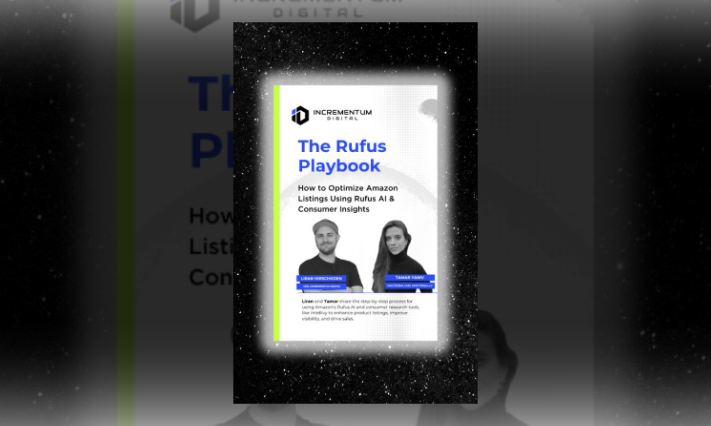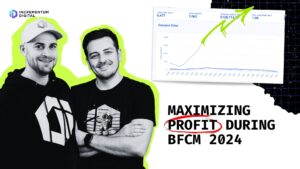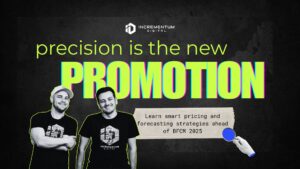eCommerce News
Amazon Prime Day 2025 Recap: Top Advertising Insights and Tactics for Brands
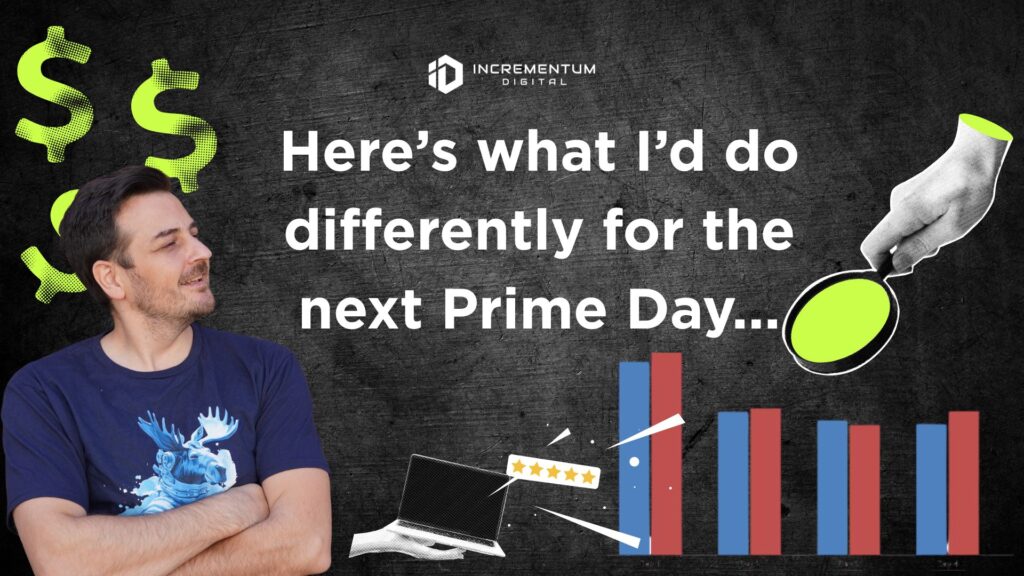
Prime Day 2025 was a milestone event. For the first time ever, Amazon stretched the sale across four full days, from July 8 to July 11, making it the biggest Prime Day in history. But while the headline numbers are impressive, they don’t tell the full story. For brands looking to win on Amazon, success isn’t just about hitting record sales. It’s about understanding what drove those numbers, what moved the needle, and what fell flat. Digging beneath the surface reveals insights that can shape smarter, sharper strategies for the next major event. In this recap, we’re unpacking what actually worked, what didn’t, and how brands can approach the next Prime Day with a clearer focus and better results. Let’s break it down.
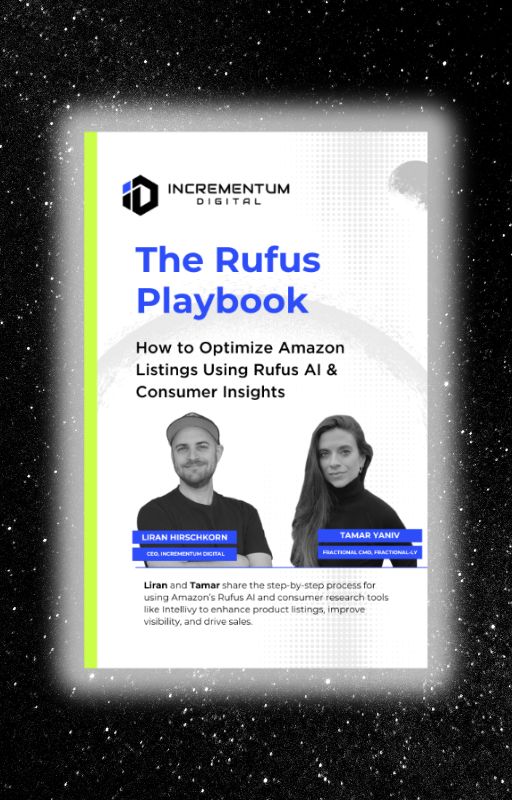
Learn How to Make Listings That Convert in 2025!
Read our step-by-step guide on how to optimize your listings using Rufus AI insights. Sign up for our newsletter and get your copy for free!
Show me howThe Surface View: Sales Performance & Consumer Behavior
Overall Sales Trends
According to Amazon’s official recap and data from Adobe for Business, Prime Day 2025 was the biggest one yet. U.S. online spending reached a record $24.1 billion over the four-day period, beating Adobe’s forecast and more than doubling Black Friday 2024’s total of $10.8 billion. Amazon noted that independent sellers also saw record performance in both sales and units sold.
Top-performing product categories, based on Adobe’s analysis, included kids’ apparel (up 250%), home security (up 185%), school supplies (up 175%), refrigerators and freezers (up 160%), and headphones and speakers (up 155%). Best-sellers on Amazon’s platform included Apple AirPods Pro 2, Ring Doorbells, Fire TV Stick HD, and BIODANCE collagen masks.
Sales momentum was not evenly distributed. According to performance insights shared by Incrementum Digital’s Ads Director, Mansour Norouzi, Day 1 saw the strongest sales lift, driven by early hype and aggressive budget deployment. Days 2 and 3 experienced a noticeable slowdown, with softer order volume and decreased sessions. However, Day 4 saw a slight rebound in conversion activity, suggesting a return of earlier browsers making final purchase decisions.
Key Shopper Insights
Consumer behavior during Prime Day 2025 revealed a clear shift in how shoppers approach high-traffic retail events:
Mobile was the dominant channel: According to Adobe Analytics, and as reported in Reuters, 53.2% of all purchases were made on mobile devices. This reinforces the need for mobile-optimized creative, fast-loading pages, and frictionless checkout experiences.
Shoppers were also far more strategic than in previous years: Coupon stacking and deal optimization were common, with many shoppers actively combining promo codes, lightning deals, and retailer offers. Numerator found that 67% of Prime Day items sold were priced under $20, and only 3% were over $100, showing a clear preference for lower-ticket items. The average price per item landed at $24.59, and average order value (AOV) dipped slightly compared to 2024.
Still, shoppers didn’t just make one quick purchase and bounce. Nearly two-thirds (63%) of households placed two or more separate orders, bringing average household spend to $156.37, even if individual orders stayed small. And what were people buying? Essentials and everyday value dominated: Premier Protein Shakes, Dawn Platinum Powerwash, Liquid I.V. Packets, and Amazon Basics Paper Plates were among the top items.
The majority of shoppers were seasoned: 87% were Amazon Prime members, 97% knew it was Prime Day ahead of time, and 88% had shopped Prime Day in the past. This wasn’t casual traffic; it was informed, purposeful, and value-focused buying behavior.
In short, this year’s shopper was mobile, methodical, and driven by savings. The brands that won were the ones ready to meet them with compelling deals, retargeting strategies, and conversion-ready experiences.
Below the Surface: What the Data Really Tells Us
Orders ≠ Engagement
One of the more surprising insights from Prime Day 2025 came from digging into behavior beyond the basic sales numbers. While Day 2 actually had more total orders than Day 4, it didn’t translate to stronger performance. According to Mansour Norouzi, sessions (meaning the number of shopper visits) dropped progressively each day of the event. However, what increased was the conversion rate.
This means that even as fewer people were browsing Amazon as the event wore on, those who did visit were more likely to buy. In other words, traffic volume declined, but purchase intent rose. Brands that focused purely on daily order volume might have missed this underlying trend: engagement doesn’t always equal conversions, and sometimes, it’s the quiet days that close the deals.
Funnel Behavior Across 4 Days
The four-day structure of Prime Day 2025 revealed a clear funnel pattern in shopper behavior. Day 2 saw the highest engagement, with a spike in clicks, product detail page views, and add-to-cart activity. Shoppers were actively browsing, comparing options, and building carts, but many held off on finalizing their purchases.
By Day 4, the dynamic had shifted. Although overall traffic was lower, conversion rates climbed. Shoppers who had interacted with products earlier in the week returned to complete their purchases, turning their earlier intent into action.
This behavior highlights a critical gap in how performance is typically measured. Amazon’s last-click attribution model gives full credit to the final interaction before a sale. As a result, it can obscure the true value of upper-funnel engagement from earlier in the event. Those who ignore this sequence risk undervaluing their top-of-funnel tactics and misallocating ad spend in future campaigns.
The biggest takeaway from this year’s data is simple but powerful. Most of the heavy lifting happened early in the event, even though the conversions came later. Shoppers spent the first two days researching, comparing, and stacking deals. By the time Day 4 rolled around, many had already made their decisions and just needed a final push to complete the purchase.
This pattern reinforces the need for a full-funnel strategy. Brands that front-load awareness and engagement efforts in the first 48 hours and then pivot to retargeting and conversion-focused tactics for the back half of the event will be in a much stronger position. It’s not just about being present at the end, it’s about doing the groundwork early enough so the close is easy when the time comes.
Want to see how our team executed these strategies in real-time? Read our full Prime Day 2025 recap for a behind-the-scenes look at Incrementum’s campaign tactics, budget moves, and team collaboration.
- Day 1 led in total orders, confirming strong early momentum. Day 4 saw a late surge in purchases, while Days 2 and 3 experienced a noticeable dip in volume.
- Organic orders outpaced ad-driven orders each day, with the widest gap on Day 1. Day 4 shows a rebound in both categories, indicating return visits and delayed conversions.
- Sessions declined steadily across the four days, while clicks held stronger—especially on Day 4. This suggests that although fewer users were browsing, those who did were more intentional and conversion-ready.
What We’d Do Differently: Mansour’s Pro Tips for Future 4-Day Events
1. Front-Load Budget into Days 1 & 2
The early days of Prime Day are where intent is highest and competition is fierce. That’s when shoppers are most curious, most active, and most open to discovering new products. We recommend allocating a larger share of your budget to Day 1 and Day 2 to take full advantage of this window.
By doing so, you capture attention while browsing behavior is peaking. It’s the perfect time to drive upper-funnel engagement through Sponsored Brands, display campaigns, and strategic placements. These early touchpoints set the foundation for conversions later in the event, especially if supported by smart retargeting.
2. Double Down on Retargeting for Days 3 & 4
Once the initial wave of discovery slows, it’s time to shift gears. Days 3 and 4 are when many shoppers return with intent to buy, especially those who browsed or added to cart earlier in the event. This is where retargeting becomes essential.
Using Amazon DSP, brands can re-engage audiences who showed interest but didn’t convert. Focus your messaging on urgency, price advantages, or limited-time deals to move them across the finish line. It’s also the moment to play defense: protect your ASINs from competitor conquesting with strategic Sponsored Products and Sponsored Brands placements.
3. Optimize for Attribution Gaps
One of the biggest traps during high-volume events like Prime Day is relying too heavily on real-time performance data. Amazon’s last-click attribution model means that many delayed conversions won’t be credited to the original ad or campaign that drove the initial interest.
To get a true picture of what’s working, it’s critical to dig into post-event analytics. Look at audience behavior over time, analyze the full path to purchase, and identify which touchpoints actually influenced decisions, even if they don’t get the official credit. This kind of insight lets you properly value top- and mid-funnel efforts and make smarter budget decisions for future events.
4. Spread, Don’t Just Spend Ad Budgets
Throwing budget at a single ad type or campaign isn’t a strategy; it’s a gamble. To win during extended events like Prime Day, you need to diversify.
Avoid over-concentration by balancing your spend across Sponsored Products, Sponsored Brands, and DSP. Each serves a different role in the funnel, and together they create a cohesive path from discovery to purchase. Sponsored Products can dominate bottom-of-funnel conversions, Sponsored Brands build awareness and category authority, and DSP gives you reach and retargeting power beyond Amazon’s native platform. The goal is to invest with precision across every stage of the customer journey.
Final Takeaways: From Reactive to Proactive
Prime Day 2025 made one thing clear: shopper behavior is evolving. Consumers are no longer just impulse buyers responding to flash deals. They’re deliberate, research-driven, and increasingly strategic in how they shop across multi-day events.
For advertisers, this means shifting from reactive tactics to proactive planning. You can’t afford to treat each day as an isolated sprint. Instead, you need to build a funnel-based strategy that aligns with how people actually shop, starting with early engagement, then nurturing interest, and closing with timely retargeting.
Winning on Amazon now demands more than just big budgets. It takes preparation, thoughtful pacing, and precision in how you re-engage high-intent audiences. The brands that adapt to this new rhythm will be the ones leading the pack next time around.
Ready to Level Up? Let’s Audit Your Amazon Sales Performance
If Prime Day 2025 didn’t perform the way you hoped, or even if it did and you want to do even better, now’s the time to act. The smartest brands aren’t just reviewing reports. They’re using real insights to refine targeting, tighten messaging, and scale what actually works.
Our team at Incrementum Digital specializes in uncovering exactly that. We’ll break down your campaign data, identify the gaps, and show you where you left revenue on the table. No fluff. Just a clear, tactical path to stronger results.
Sign up for your free Amazon Ads audit today and walk away with a sharper strategy for your next major event, no strings attached.
LET’S DISCOVER WHAT’S POSSIBLE FOR YOUR BRAND
We’re here to listen and uncover opportunities tailored to your unique goals.
Fill out the form to get started, and you’ll walk away with real insights and actionable recommendations—whether we work together or not.
- HANDS-ON LEADERSHIP
- AWARD-WINNING PARTNERSHIPS
- CUSTOM-BUILT SOLUTIONS



